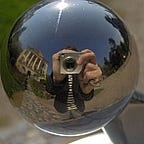AI as Artist’s Augmentation
Art’s unstoppable revolution
--
Art is a need for disruption. Art has a desire for disruption. Art should get disrupted.
Dadaists, Surrealists, Oulipo, Fluxus, Postmodernists, and Conceptualists — all spoke of the need for a paradigm shift in art. Gone was the authoritarian and elitist relationship between art and the public. Well, not quite.
Umberto Eco spoke in 1969 at the symposium “Computers and Visual Research” (in the context of the generative art movement “New Tendencies”):
“The authoritairan relationship would change only if researchers and artists […] instead of creating objects, began to promote active participation” (New Tendencies, edited by Margit Rosen, 2011)
Fortunately, with the rise of generative AI since 2015, we are seeing this new trend. ML researchers are diving deeper into the development of creative tools, and artists are inspired and fascinated by AI models — they are coming together and providing them:
Solutions.
The narrative of AI as the exclusive domain of large corporations and research institutions is outdated. By enabling access to ML/DL approaches, AI will be democratized.
Generative AI provides novel creative approaches for artists. That doesn’t mean that all artists should jump on the AI bandwagon. But it does mean that we can’t — and shouldn’t — stop them. Creativity is untamed.
There is so much discussion at the moment about art being negatively affected by AI. But I think there is a misunderstanding of what art is. Craft? Yes, it could be affected by AI — when models create visuals that are quantitatively and qualitatively more intensive than their human counterparts. But is it art? Art is when human or machine visual products are embedded in concepts, stories, interpretations — made by humans. AI art is also a very human art. And art loves to question itself.
In our century, we are finally getting rid of the elitism and academism of art (at least in the generation of art). Everyone is empowered, everyone is an artist, as Joseph Beuys once said.
Two Types of Enablers
There are two types of enablers that provide AI power to artists:
- Software: AI-driven applications.
- Hardware: resource-heavy path.
Both of them have ups and downs.
The Way of Software: Convenience.
The software way is most useful for non-coders who want to experiment in an intuitive way. New ML models are released almost daily and new digital solutions are created: RunwayML, DALL-E, StableDiffusion, Artbreeder, Midjourney, Kaiber, TokkingHeads — the list goes on. They are all accessible via web applications, they run in the cloud, and you can even work with them on a smartphone — and get amazing results.
The downside is the cost. You can use them until you run out of credits. Most of these solutions run as subscription services, even if most of them are based on open-source models. You have to balance the difference between intuitive use and the cost factor.
The Way of Hardware: More Effort
The Way of Hardware allows you to use open-source models indefinitely. Without worrying about running out of credits. All you need is solid hardware and a fearless approach to coding.
Of course, cost is a factor here too — you need a good GPU and processor for better and faster performance, which can be expensive. But this one-off investment gives you more freedom to test all the open-source models available, without having to wait for them to be implemented in software.
My transition
I am (or was?) a non-coder. My last computer language was BASIC (yes, the old one, with numbered lines).
I was more the aesthetic type of creative — trying new approaches if they were offered in an intuitive way. OK, I installed Deep Dream on my laptop back in 2016, which I recognize as my personal achievement. And yet I was eager to try out new generative AI models, even though I had almost zero knowledge of Python.
With the invention of Jupyter and Google Colab notebooks, we’ve had access to more and more novel approaches. You didn’t really need to know how to code — just do it cell by cell. Sure, if you know Python, you could experiment with more settings.
Thus, every time a new model was published, I was like…
All my articles — be it DeOldify, JukeBox or GPT-2 — were based on Colab Notebooks.
But all the while I was flirting with the idea of a hardware solution that would give me:
- unlimited computing power
- experiment with the latest models
- be independent of everyone and everything, and run the models locally.
And now it’s here. Using the hashtag #MerZ8, I will tell you about my experiments with a local hardware workstation that opens up new possibilities.
Stay tuned!
P.S. You will find more about this topic in my new book “KI-Kunst”.
